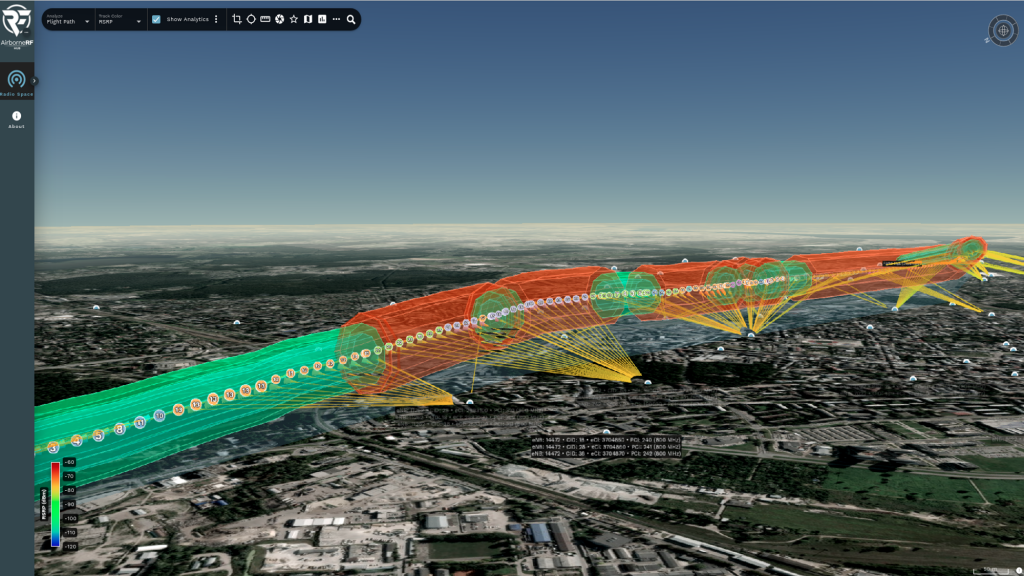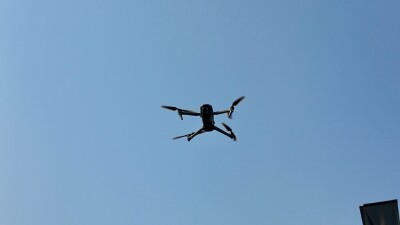Following up on the recent announcement of the new capabilities of AirborneRF, I had an opportunity to interview Thomas Wana, Co-founder and CTO of Dimetor, about AirborneRF HUB to understand how the new solution enables drones to utilize multiple connectivity sources with a single interface.
What is AirborneRF, and how does it enable bvlos drone operations?Thomas Wana: AirborneRF is a connectivity platform that enables UAV operations in cellular networks outside the visual line of sight to a pilot. Our main aim is to provide a solution that allows drone operators and UTM providers to receive connectivity information dynamically.
The platform is designed to transmit data to the users early in the flight planning phase, for flight clearance, and in real-time throughout the flight operation. The whole process is automated, which we believe is crucial for the business to scale.During the last couple of years, we have signed great collaborations with leading mobile network operators such as Swisscom, KPN, British Telecom and many more. This year we are incredibly pleased to welcome our first satellite communication provider partner, Inmarsat, and with that open up to combine multiple sources of connectivity data for BVLOS drone operations.
Why is AirborneRF HUB different?
TW: AirborneRF HUB is unique. It can analyze data from several sources, such as mobile network operators and satellite network providers, and it can give the best feasible connectivity for a flying route of drone missions. This functionality allows the platform to provide a single source of information for any drone operators that are linked to its system. We offer our aviation and connectivity provider partners easy access to the information with a single contract, without the worry of sharing their data with multiple stakeholders as the data is fully anonymized, and only shows the needed flight path information.

What is the benefit of the hub to drone operators?
TW: Drone Operators' next challenge is to scale their business and create revenue. To scale up your drone operations and deliver Beyond Visual Line of Sight drone services, such as power line inspections, rail track inspections, and public safety and first responder services, users need all critical data with the greatest possible connection while meeting redundancy needs. AirborneRF HUB provides this from a single source, with a single contract, with a single interface. So, the users do not need to worry about where the information comes from, only focusing on satisfying their customer's needs.With the new HUB, AirborneRF partners will be able to achieve the service uptime required for the different application cases, in all types of weather and satisfy regulatory requirements through dual dissimilar redundancy.
Furthermore, AirborneRF HUB provides the perfect data source for dynamic digital data feeds into any kind of risk assessment and digital SORA application.
How can mobile network operators and satellite service providers collaborate via the Hub?
TW: Mobile Network Operators have the ability to provide critical risk data, which has been accumulating in their data centres over time. However, there has been a total absence of interfaces linking Mobile Network Operator systems with aviation or satellite stakeholders due to privacy and data security concerns. AirborneRF is already implemented inside MNO data centres and offers a safe, secure, and fully automated data exchange capability that fully fulfils the demanding MNO privacy and data security criteria. Mobile Network Operators with AirborneRF HUB now can offer 100% connectivity to their customers by collaborating for example with satellite providers or even other MNOs without sharing their data.
This extends the range of their services that are not served by the terrestrial networks. Hence, it will enable some high-value BVLOS services and provide opportunities for other added-value services that were not possible before.
Critical information (real-time ground density maps and in-flight connection performance, for example) may now be accessible to aviation stakeholders globally in a standardized, digital format. Mobile Network Operators can reliably deliver this crucial data while also adding value for drone operators.
















Comments